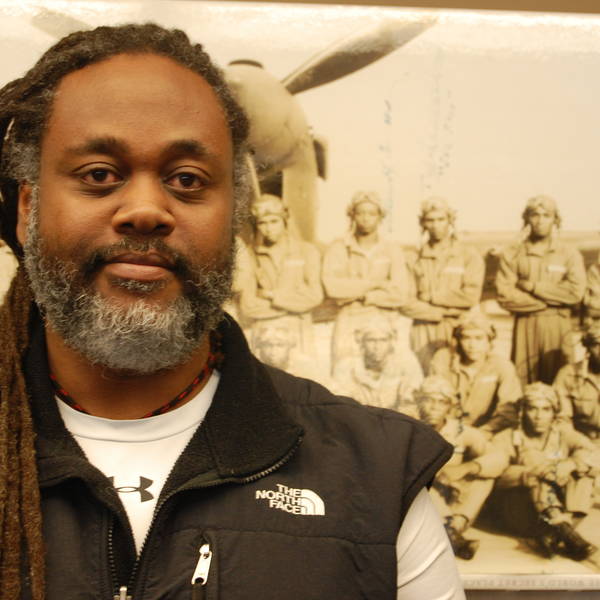This story is part of our series on national heritage areas, the large lived-in landscapes managed through innovative partnerships to tell America’s cultural history.
“It’s a hell of a place to lose a cow.”
So sings folklorist, musician, and proud Utah native Clive Romney. I’m with 20 members of the Alliance of National Heritage Areas who’ve come to Utah to tour the Mormon Pioneer National Heritage Area. Thanks to the shutdown of the federal government and our national parks, we’re not in Bryce Canyon National Park so much as near it. At our current roadside stop, Romney, guitar in hand, is singing a ballad about a wandering bovine and the legend of a Mormon pioneer who tracked that lost cow through this inspiring and rugged landscape.
The song is a humorous ballad, and Romney is an affable man with a great gift for storytelling and making people smile. But the story of how the Mormons came west and began settling the Utah Territory has brutal origins founded in religious intolerance and prejudice. Mormon Pioneer National Heritage Area, which stretches across six counties in south-central Utah and encompasses Zion, Bryce, and Capitol Reef National Parks, was established in 2006 to commemorate that history, as well as the determination that drove the Mormons to explore and settle one of the most remote areas in the American Southwest.
In 1844, the murder of Mormon leader Joseph Smith in Illinois spawned a period of intense and deadly violence between Mormons and non-Mormons. To avoid further clashes, newly elected leader Brigham Young led his people west, leaving the United States to settle in what was then the Territory of Utah. The vast, rugged landscape Young and his people encountered on the Wasatch Front had been home to American Indians, most notably the Ute and Paiute people, for centuries. Spanish settlers had blazed trails throughout the region, but it was the Mormons who became the first truly successful non-Indian people to settle in the region.
These pioneers did so with a resolve that remains a fierce point of pride among their current-day descendants. To create (or recreate) a version of Zion in the desert, Mormon men, women, and children met and endured challenges that ranged from an unforgiving climate to a hostile U.S. army—tribulations that would have stopped a less-determined people in their wagon tracks. From the 1850s onward, Mormon pioneers established planned communities throughout the territory with the objective of creating a corridor of Mormon settlements running from Salt Lake City to the Pacific Ocean.
The difficulty involved in settling some of the most remote and rugged land in North America is best exemplified by the Hole-in-the-Rock expedition of 1879. That autumn, the leadership of the Mormon Church sent 250 men, women, and children on a mission to find a direct transportation route south through 200 miles of nearly inaccessible territory to the Colorado River near the present day Utah/Arizona border. At one critical juncture, the expedition had to blast their way through a mountain to create a passageway large enough to accommodate their convoy, one wagon at a time. The wagons (83 of them) and horses were then lowered with ropes down a perilously steep incline to the Colorado and floated across to the southern side of the river. The expedition, which had been scheduled to last six weeks, took six months. Historian David E. Miller wrote of that journey, “No pioneer company ever built a wagon road through wilder, rougher, or more inhospitable country.”
The story of the tenacity and courage of the Hole-in-the-Rock Expedition is capably told at the Escalante Heritage Center in Escalante, Utah, one of a score of stops found in the Mormon Pioneer National Heritage Area.
Clive Romney later shares with us that while a trip to Temple Square in Salt Lake City will teach the visitor about Mormon doctrine, a tour of the Mormon Pioneer National Heritage Area will shed light on the way that doctrine was put into practice. The planned communities, shared resources, and faith-based pioneering enabled the Mormons to fulfill their religious obligations by “living the Order.” It is a remarkable history of a unique people written on an indescribably beautiful landscape.
For more information and trip-planning resources, visit the Mormon Pioneer National Heritage Area website.
About the author
-
 Alan Spears Senior Director of Cultural Resources, Government Affairs
Alan Spears Senior Director of Cultural Resources, Government AffairsAlan joined NPCA in 1999 and is currently the Senior Director of Cultural Resources in the Government Affairs department. He serves as NPCA's resident historian and cultural resources expert. Alan is the only staff person to ever be rescued from a tidal marsh by a Park Police helicopter.